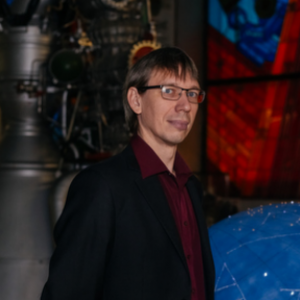Scientists at Samara National Research University (hereinafter referred to as Samara University) have proposed a method for effectively removing debris from space orbits, based on mathematical modeling of the “blowing away” of debris by an ion beam. According to them, the development will help protect stations and satellites from accidents in airless space. The results of the study were published in the journal Vestnik St. Petersburg University, Mathematics.
A collision between a spacecraft and even a small piece of debris can cause major problems, as space objects move at high speeds. And large space debris, such as a broken satellite or a fragment of a rocket stage, can cause the complete destruction of even large objects such as the ISS.
To solve the problem of removing space debris from orbit around stations and satellites, specialists from Samara University previously proposed placing a device on space objects that would “blow” debris out of dangerous orbits. They then described a “hybrid” method of such contactless cleaning.
This method involves simultaneously electrostatically attracting or repelling a debris object and blowing it with the torch of a spacecraft's electric motor, Alexander Ledkov, associate professor of the Department of Theoretical Mechanics at Samara University said.
“It all works quite simply. The spacecraft's debris removal apparatus directs a jet stream from its electric propulsion engine at a debris object. The jet's particles impact its surface and create a small force, which we use for transportation. The debris slows down and deorbits,” he explained.
While working on the problem of contactless removal of space debris using an ion beam, researchers encountered a difficulty. Since the generated ionic force is very small and amounts to hundredths of a newton, the process of removing space debris from orbit can take months. Calculating such a long process, taking into account that the angular oscillations of space debris affect the ionic force generated, requires significant computational costs.
“Our university has a supercomputer, but it won't help here, since the problem of numerically integrating the equations of motion requires only sequential calculations. Mission planning and problem analysis require a large series of calculations, and each calculation is quite time-consuming. At the dawn of cosmonautics, limited computing power and the need to calculate trajectories taking into account various disturbances spurred the rapid development of approximate asymptotic methods, which allow for less computationally demanding mathematical models while maintaining the necessary accuracy. Half a century later, we once again face problems where the developments of the 'old school' can be useful,” Ledkov explained.
To solve a complex computational problem, researchers at Samara University created a simplified model that allows them to analyze the process of contactless ion transport of space debris.
“Using Gaussian equations in oscillating variables and Volosov's averaging method, we obtained approximate equations for the motion of space debris. The integration results of these equations agree well with the results of the original, cumbersome model, and the model itself is significantly less computationally intensive,” Danil Bakulin, a co-author of the study and a student majoring in Mechanics and Mathematical Modeling at Samara University said.
According to scientists, the gain is particularly noticeable when calculating the transportation of rotating space debris. The new tool will allow them to more deeply explore various aspects of the space debris removal mission and move one step closer to solving this pressing problem.
Source: ria.ru
 RU
RU  EN
EN  CN
CN  ES
ES 